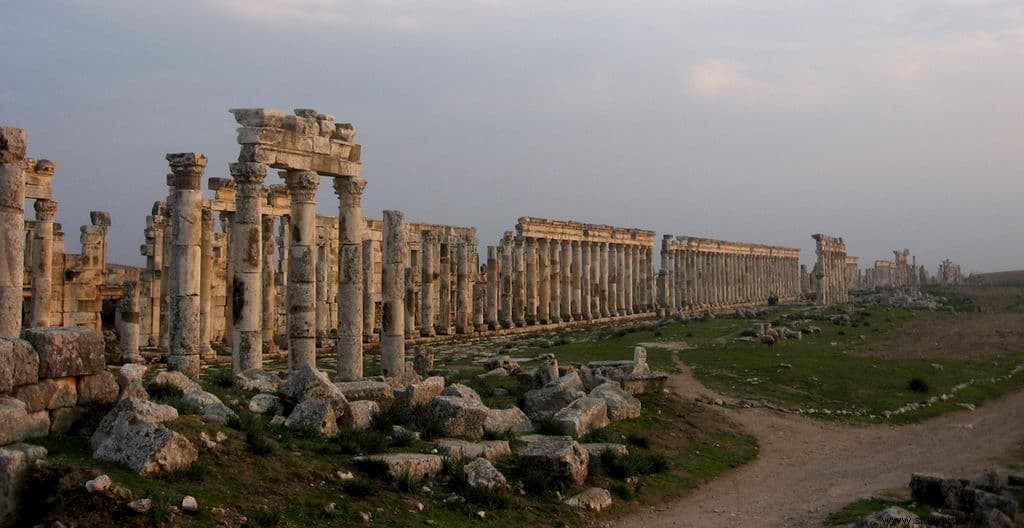One of the main characteristics of the most important cities of antiquity in the Hellenistic kingdoms, first, and in the Roman territories of the East, later, are the great colonnaded avenues. They also existed in Rome itself and other European cities, but the oriental examples are usually larger and many of them are in better condition.
The largest of all, and possibly also the first to be built, was the one that flanked the thistle of Antioch, which was about 2,275 meters long, that is, just over 2 kilometers. But there is hardly anything left of her.
Of the three best preserved, those of Ephesus, Palmyra and Apamea, perhaps the latter is the one that today has the greatest spectacularity, since many of its columns are still standing.
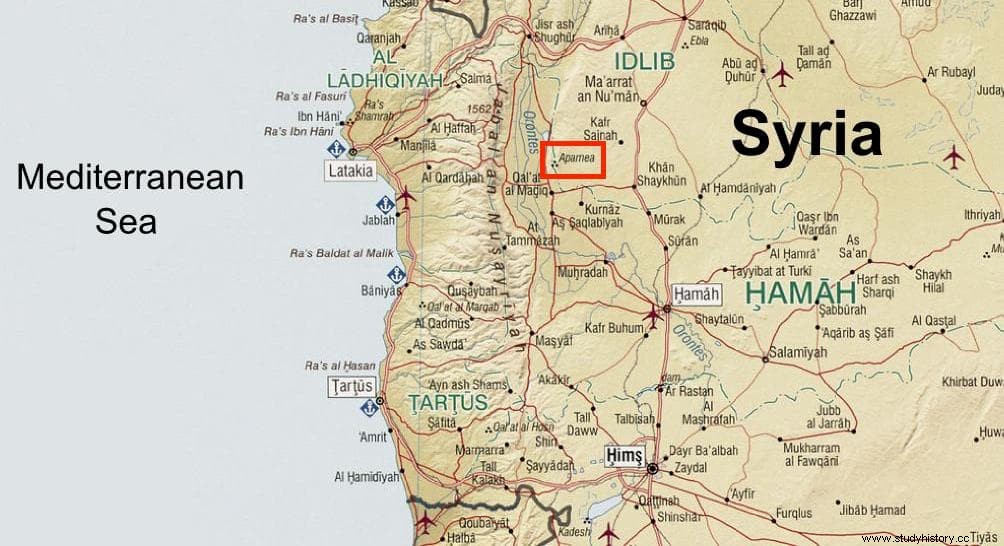
Apamea (Afamia in Arabic) is the archaeological site of a city located in the valley of the Orontes River, northwest of present-day Syria, which Alexander the Great called Pella. In the year 300 B.C. Seleucus I Nicator, the last of the Diadochi, rebuilt it, enlarged it and fortified it, naming it after his wife Apama.
Already then a colonnaded avenue was built, which was practically destroyed in the year 115. On December 13 of that year an earthquake of magnitude 7.5 and intensity XI (extreme) on the Mercalli scale, shook the nearby city of Antioch and its surrounding region. Apamea and other cities were completely destroyed.
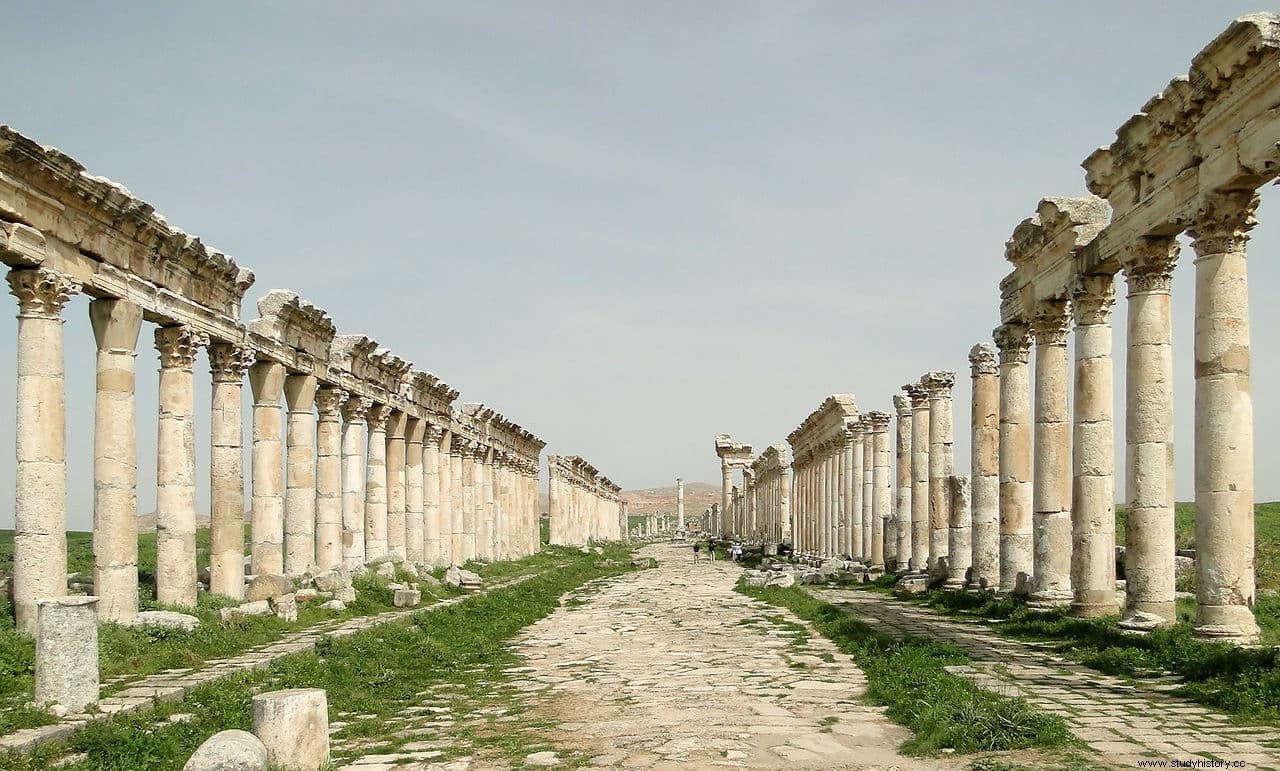
Trajan ordered the immediate reconstruction, beginning with the imposing colonnade, whose work extended throughout the entire second century. The avenue is oriented on the north-south axis of the city, following the cardo maxima . From the north gate of the city, the colonnade stretched about 2 kilometers in a straight line to the south gate.
After about 1,500 meters of travel, it was crossed by the other main axis of the city, the decumano , intersection marked by two triple arches. The main buildings of the city were arranged around the colonnaded avenue:baths, agora, nymphaeum, basilica and the Temple of Tyche (personification of fortune and chance).
The inner street was 20.79 meters wide and was paved with large polygonal stones. The lateral colonnades were 6.15 meters wide throughout, with columns 9 meters high and almost a meter in diameter, raised on square bases half a meter high and 1.24 meters on a side.
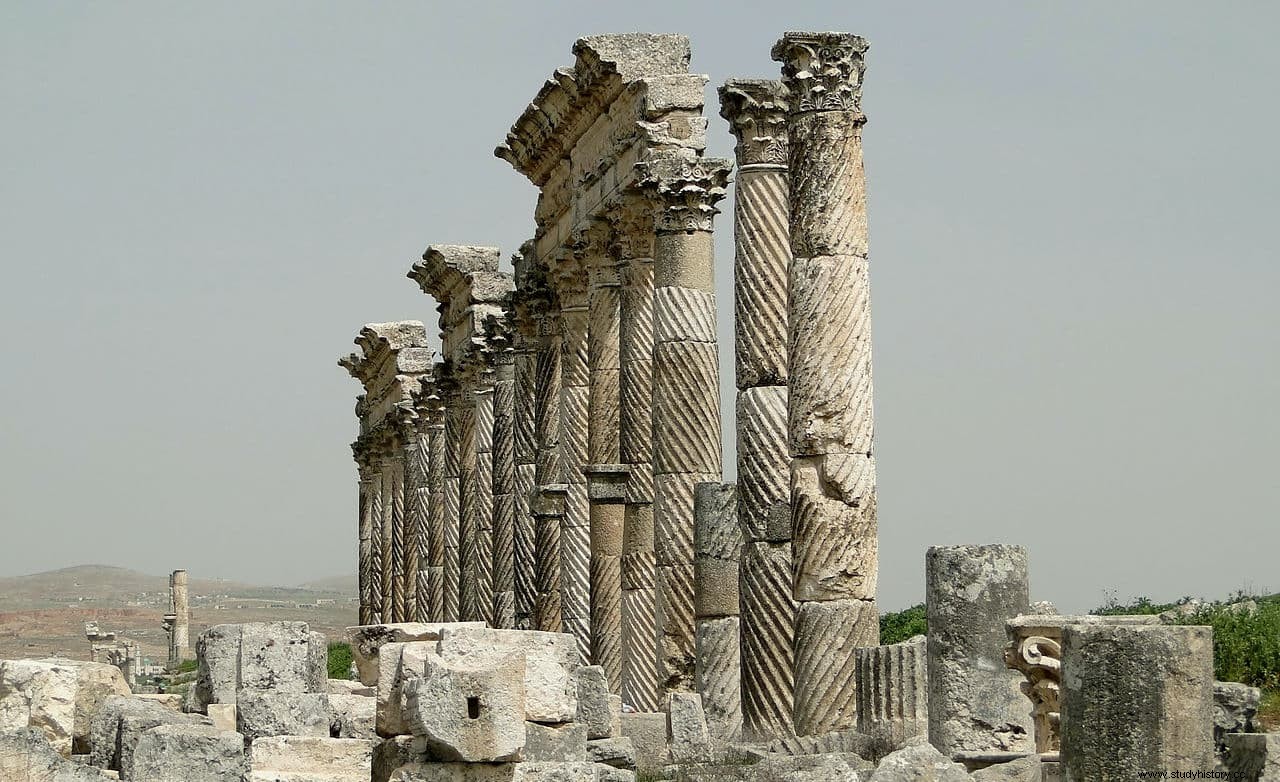
The different decorative motifs of the columns are attributed to different construction periods, the flattest to the time of Trajan and the fluted spirals to that of Antonino Pio. The porticoes under the colonnade were decorated with large mosaics.
Some authors believe that the monumentality of the colonnaded avenue was interrupted by the arrangement of shops and stalls in the spaces between the columns, which on many occasions extended to the very pavement of the street. Perhaps for this reason, in Justinian's time, some parts of the colonnade were restored, and the inner street was reduced to 12 meters by adding a sidewalk about 4 meters wide on each side.
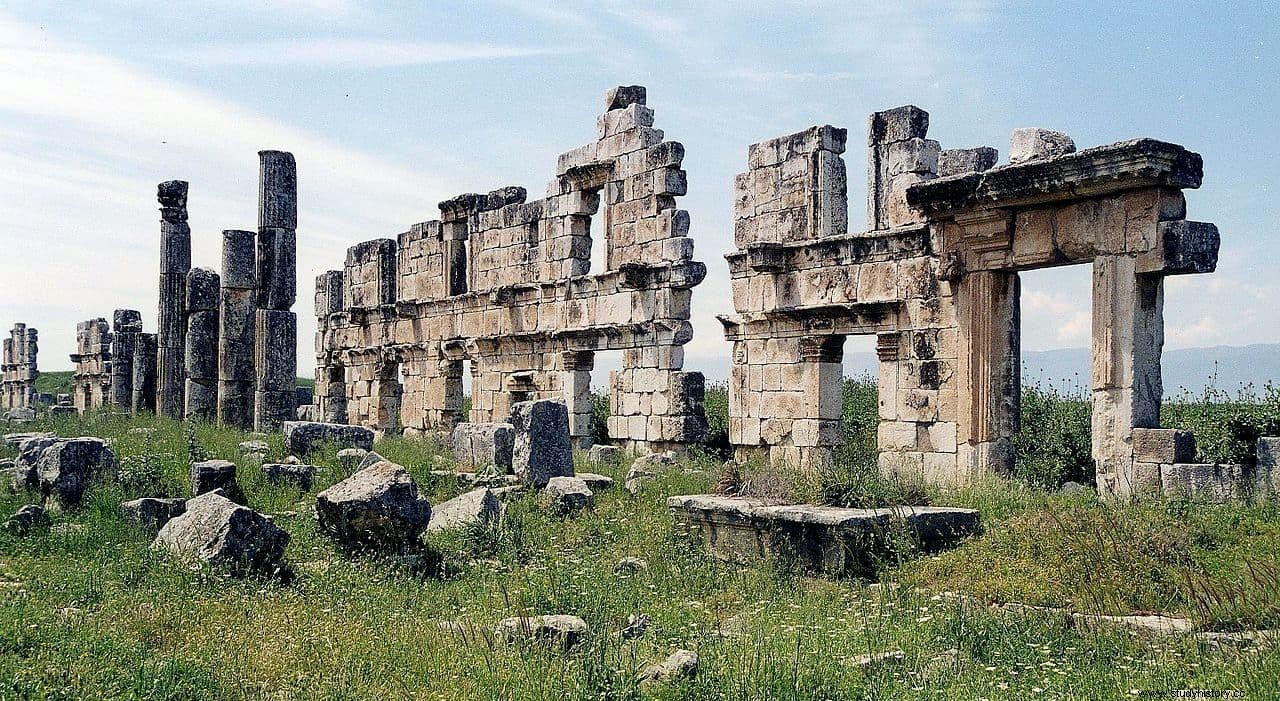
In any case, it remained one of the largest colonnaded avenues in the Roman world. And furthermore, it is one of the few places where a row of windows above the doors of shops, typical of Roman markets, has been preserved.
The city had a population of up to 500,000 inhabitants, according to the funerary stele of Quintus Aemilius Secundus, who carried out the census in the year 6 AD. Destroyed by the Sassanian king Chosroes I in the 6th century, the city would be partially rebuilt after the Muslim conquest of Syria in 638. Its final end would come due to another earthquake in 1152.
Interestingly, the Greeks called Apamea kibôtos , which means money chest , chest , possibly because of its abundant wealth. As in Greek this word also meant ark , from the third century the city began to mint coins with the image of Noah's ark. It seems that the Christians of Apamea maintained that this was the place where Noah's Ark had landed, in the biblical account of the universal flood.
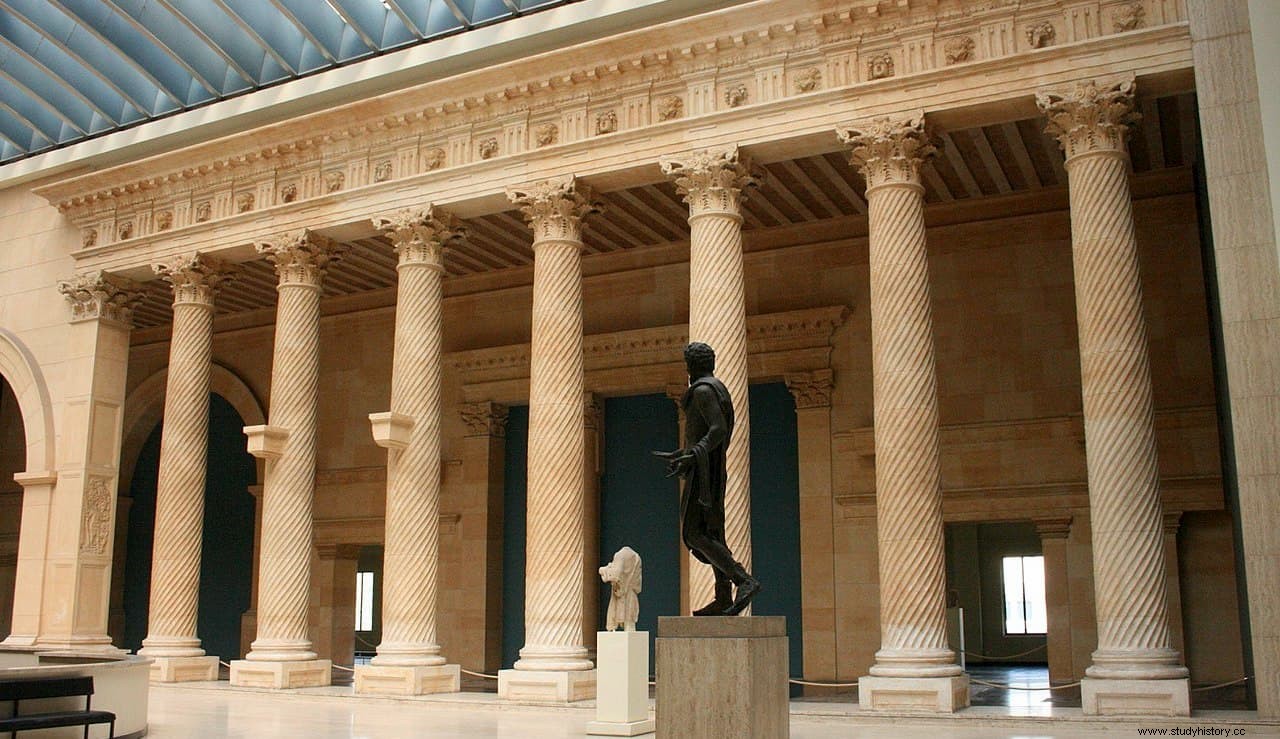
A reproduction of a section of the Apamea colonnade as it must have been in its heyday can be seen at the Musée du Cinquantenaire from Brussels.
According to Ross Burns, the colonnade at Apamea is the most spectacular surviving example of a colonnaded shaft as well as one of the most prestigious avenues of world architecture . And it surpasses all the others in three aspects:its dimensions, its linearity, and the extraordinary proportion of its surviving columns.
